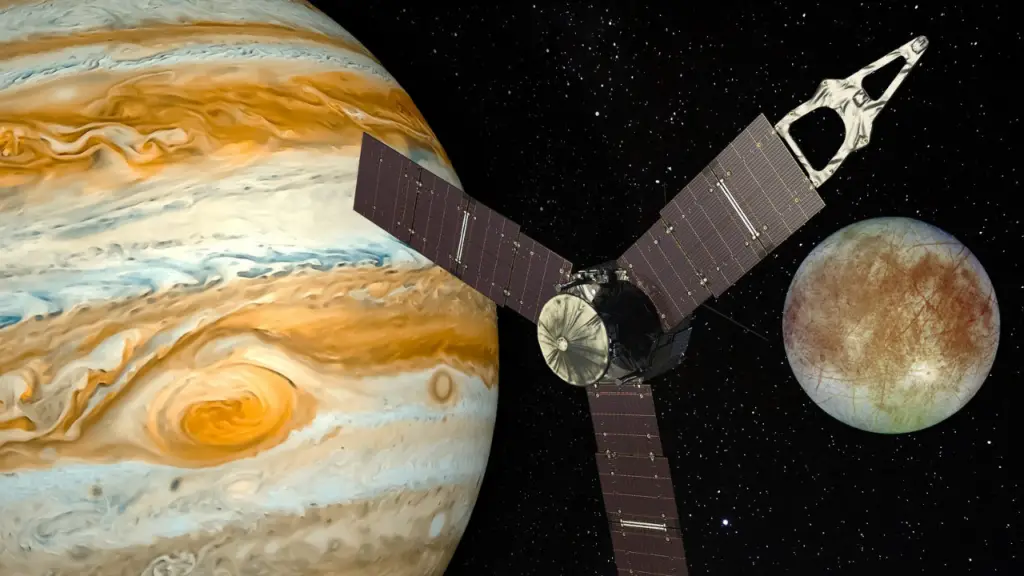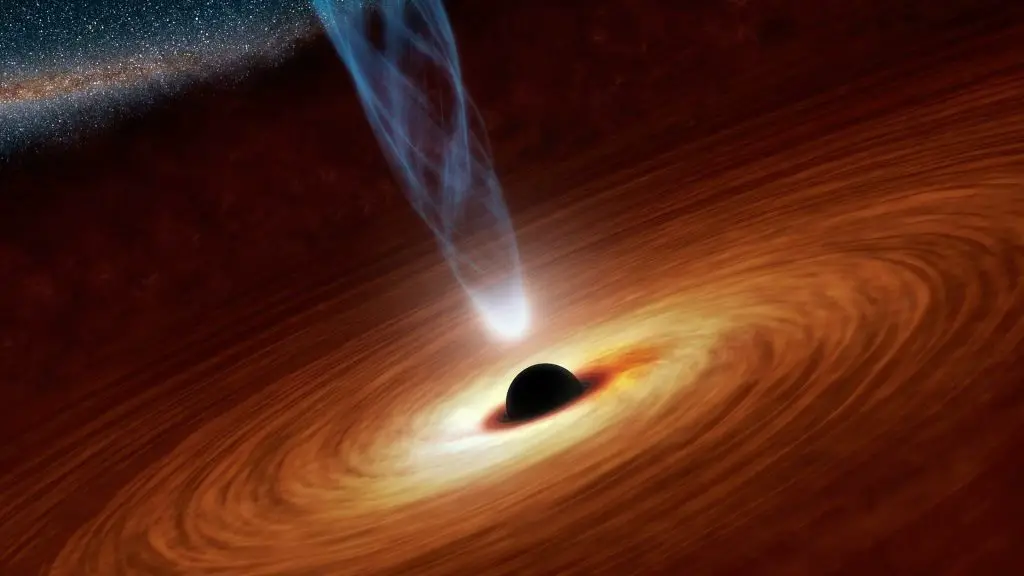Since NASA’s Juno spacecraft arrived in the Jovian system on July 4, 2016, the spacecraft has been making numerous scientific discoveries for mankind. However, the American space agency is expecting to learn more about Europa from the forthcoming Juno flyby on the icy moon. On Thursday, Sept. 29, at 2:36 a.m. PDT (5:36 a.m. EDT), NASA’s Juno Spacecraft will conduct a flyby mission within 222 miles (358 kilometers) above the surface of Jupiter’s icy moon, Europa. What is NASA expecting from this mission? How can you track the mission live? Continue reading to find out.
What NASA is expecting from its Juno Spacecraft During this flyby mission
Unlike previous space missions to Europa, NASA is expecting the solar-powered spacecraft to capture some highest resolution photos of Europa’s surface and obtain useful data from the icy moon’s ionosphere, interior, and surface composition. Juno spacecraft will also collect data about Europa’s interaction with Jupiter’s magnetosphere.
Europa comes with an equatorial diameter of about 3,100 kilometers (1,940 miles), making its size reach about 90% the size of our home planetary moon. Based on data provided by past space missions to Europa, Scientists estimate that a salty ocean may be lying beneath its miles-thick ice shell. Since the presence of salty water on any celestial body is a sign that some lifeforms may be existing on the interior or surface of the object, scientists began to wonder if Europa has a sustainable condition of supporting life beneath its surface.
Despite finding it challenging to answer this question, Scientists have remained optimistic about gaining more useful information from future space missions to Europa. As the Juno spacecraft prefers to make another flyby around Europa, Scientists hope to be able to learn new facts from this mission. In fact, NASA is currently working on launching Europa Clipper in 2024 to explore and provide valuable data about the icy moon. This implies that information gotten from Juno’s flyby will be beneficial to NASA’s scientists currently working on the Europa Clipper mission.
Scott Bolton, who works as Juno Principal Investigator of the Southwest Research Institute in San Antonio announced the next Juno flyby mission with this statement. “Europa is such an intriguing Jovian moon, it is the focus of its own future NASA mission,” said Bolton, “We’re happy to provide data that may help the Europa Clipper team with mission planning, as well as provide new scientific insights into this icy world.”
From his statement, we should be expecting the Juno spacecraft to provide us with fascinating imagery and valuable science from tomorrow’s flyby mission.
How Juno Spacecraft Will Conduct the Flyby
Juno spacecraft is already heading towards Europa to make a close flyby. The flyby mission will help in modifying Juno’s trajectory and lowers the number of days it takes the spacecraft to orbit from 43 to 38 days. During the flyby, the Juno spacecraft is expected to reach 222 miles (358 kilometers) above the surface of Europa. This will be the closest distance NASA Spacecraft has moved closer to Europa after the Galileo spacecraft reached 218 miles (351 kilometers) on Jan. 3, 2000.
Keep in mind that Juno visited Ganymede in June 2021 and is about to visit Europa as the second Galilean moon during its extended mission. NASA is looking forward to making a closer approach to Io in 2023 and 2024 respectively. These missions will unveil more fascinating stuff about the Galilean moons before mission termination.
The spacecraft will begin to collect data when it reaches about 51,820 miles (83,397 kilometers) away from Europa. This is approximately an hour before reaching Juno spacecraft makes its closest approach to Europa. As the spacecraft continues to move closer to Europa, its suite of instruments and sensors will become active to collect relevant data from Europa.
NASA plans to use Juno’s medium-gain (X-band) radio antenna and Jupiter Energetic-Particle Detector Instrument (JEDI) to obtain data from Europa’s ionosphere. The spacecraft will also use its Jovian Auroral Distributions Experiment (JADE), and Magnetometer (MAG) experiments to measure plasma in Europa’s wake as the space probe studies Europa’s interaction with Jupiter’s magnetosphere.
John Bordi, who serves as Juno’s deputy mission manager at JPL describes how the mission will go with these words. “The relative velocity between spacecraft and moon will be 14.7 miles per second (23.6 kilometers per second), so we are screaming by pretty fast,” said Bordi. “All steps have to go like clockwork to successfully acquire our planned data because soon after the flyby is complete, the spacecraft needs to be reoriented for our upcoming close approach of Jupiter, which happens only 7 ½ hours later.”
Juno will use its Microwave Radiometer (MWR) to look into Europa’s water-ice crust and collect data about its temperature and composition. If this is accomplished successfully, then humanity has just obtained its first data from Europa’s icy shell. The spacecraft will also capture up to four visible-light images of the moon using its JunoCam.
When Juno imagery reaches the earth from deep space, scientists will closely compare the newly photographed images with the ones captured from previous missions. Keep in mind that the last time we obtained images from Europa was more than two decades ago. Hence, these latest images from Juno will enable scientists to learn about new changes that may have occurred over these years. As Juno makes its closest approach, the spacecraft will enter Europa’s shadow. But since Jupiter’s atmosphere reflect sunlight, the Juno spacecraft will surely capture a more detailed view of the icy moon.
How to track the mission Live
NASA has made it possible for viewers to track its Juno spacecraft exploration in the Jovian system. The American Space agency designed an online tool named the Eyes on the Solar System to enable space lovers to monitor its deep space missions. You can use this app by zooming in on the Jovian system and finding Europa among other Galilean moons.
NASA has made it easier for you to identify the Juno spacecraft with its giant blades extending up to 20 meters (66 feet) long. You can slowly monitor its movement and see one of our sophisticated space technologies unlocking new mysteries for humanity. You can find the spacecraft with its spinning blades making oval-shaped orbits around the largest gas giant in the solar system.
Conclusion
As Juno Spacecraft makes its closest approach to Europa, we should be expecting new scientific discoveries from this mission. Scientists will surely use the outcome of the mission to prepare for future Europa clipper missions to the icy moon. What are you looking up to from this mission?




